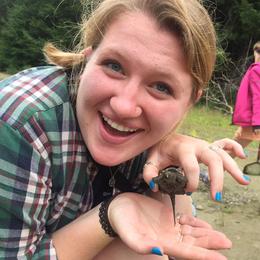With many of these creatures sometimes we get confused and are unsure of where it is a reptile or an amphibian. This will break down the two groups, and also show us the similarities between the too.
What is a Reptile?
A vertebrate animal and are distinguished by having a dry scaly skin and typically laying soft-shelled eggs on land.
Let’s break that down:
A reptile is a vertebrate, meaning it has vertebra aka a backbone, as we do (our spine). They have dry scaly skin (or scutes), and lay eggs on land and hatch looking like a smaller version of their adult self.
Other Characteristics of a reptile are:
-
They breathe through their lungs, They don’t breath through their skin or have gills.
-
Typically have four legs for whole life, the big exception for this is snakes who have no legs but are descendants of four-limbed ancestors.
-
Are cold-blooded also known as being ectothermic. Reptiles don’t have the means to regulate their body temperature like mammals do. They depend on the sun and hibernating in cold seasons to raise their body temperature. They also depend on shade and cold water to lower their body temperatures. For example, turtles will “bask” on a rock in the sun and then when it gets too hot, drive into the water to cool down
Examples of Reptiles here in Vermont:
Painted Turtle
Common garter snake
Snapping turtle
Milk snake
Spotted turtle
Eastern Rat Snake
Wood Turtle
What is an Amphibian?
A cold-blooded (ectothermic) vertebrate (just like reptiles) animal that are distinguished by having an aquatic gill-breathing larval stage followed (typically) by a terrestrial lung-breathing adult stage.
Other Characterizes of Amphibians:
-
Laying unshelled eggs covered in a gel like substance, and lay in a body of water like a pond or vernal pool.
-
Smooth moist skin that can secrete toxins
-
Webbed feet and short limbs (good for jumping and swimming)
-
Can breathe through their skin and lungs
Examples of Amphibians in Vermont
American toad
Eastern newt
Spring Peeper
Wood Frog
Spotted Salamander
Red-backed salamander
American bullfrog
Similarities between amphibians and reptiles
You may have already noticed some similarities! Let’s see if you caught then all!
-
Cold-blooded Ectothermic
-
Vertebrate, both have backbones
-
Both have lungs to breath
-
Both lay eggs (where and what kind are different)
What’s the bird connection?
A number of birds eat amphibians like crows, jays and a number that eat reptiles, great blue heron, hawks, terns. For many birds, these critters are their course of food and energy. Bird also have a number of “reptilian” similarities like scales (birds have scales on their feet), birds lay eggs with a shell, and they are both vertebrates. Birds, reptiles, and amphibians play an important role in their ecosystem.
Follow up Activity!
Using the worksheet provided, see if you can tell which characteristic is for an amphibian, reptile, or even both! You can fill in the spots under the picture with your answer, or maybe you want to cut out the photos and short them into piles!





